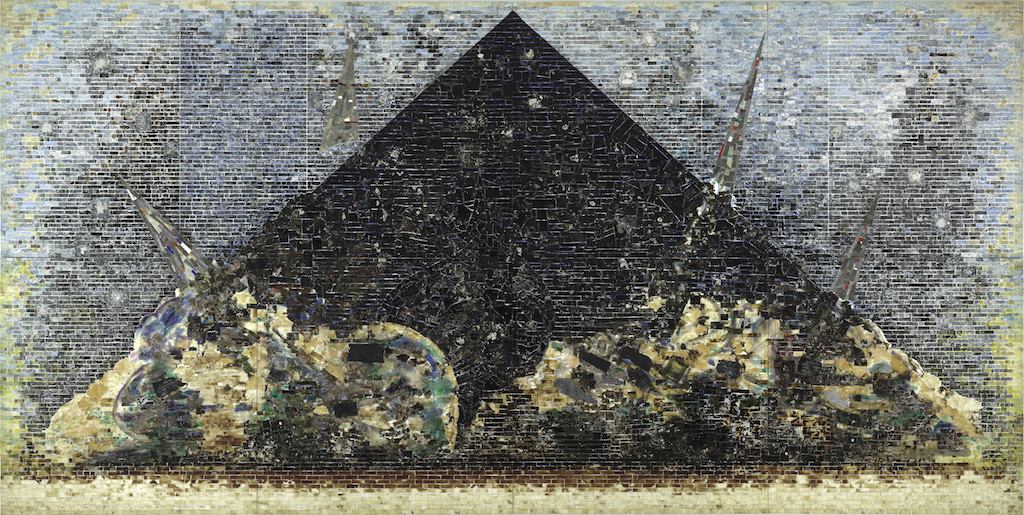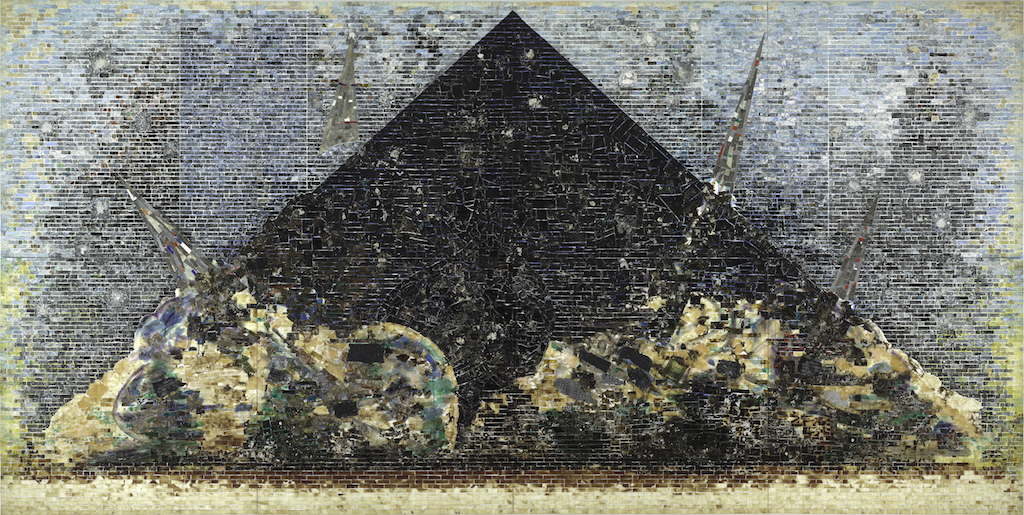[ad_1]

Jack Whitten, 9.11.01., 2006.
BALTIMORE MUSEUM OF ART, PURCHASE BY EXCHANGE OF FUNDS PROVIDED BY THE PEARLSTONE FAMILY FUND AND THROUGH A PARTIAL GIFT OF THE ANDY WARHOL FOUNDATION FOR THE VISUAL ARTS, INC.
In April, the Baltimore Museum of Art announced a controversial decision to deaccession works by Andy Warhol, Robert Rauschenberg, and Franz Kline in hopes of using the proceeds to add pieces by women and persons of color to its collection. Those works hit the auction block at Sotheby’s auction house in New York in May, and today the museum named seven new acquisitions made with money gained from those sales.
Among the new holdings are an abstracted vision of September 11, 2001, by Jack Whitten, who witnessed that fateful day from his studio and painted it using his chipped acrylic tile method, and a painting by Amy Sherald, of two people on a plain watching a rocket launch into space. (Sherald, who is a board member at the BMA, recused herself from the decision to acquire her work, according to a museum spokesperson.) The other purchases include a video work by Isaac Julien, a painting by Lynette Yiadom-Boakye, a sculpture by Wangechi Mutu, and two film pieces by Mary Reid Kelley and Patrick Kelly.
The works sold from the BMA holdings included a Warhol “Oxidation Painting” that went for $3.4 million and a Franz Kline abstraction that sold for $5.2 million. While the BMA defended the decision to auction off works to buy others as compliant with guidelines set by the American Alliance of Museums and the Association of Art Museum Directors, some took issue with the deaccessioning—including an op-ed in the Baltimore Sun calling it a “horrendous decision.”
The BMA also announced additional recent acquisitions today, including a mixed-media painting by Njideka Akunyili Crosby; photographs by Harry Callahan, Chuck Ramirez, and Wang Qingsong; prints by Yun-Fei Ji and Adam Pendleton; and a painting by Odili Donald Odita (which is a promised gift form the Joyner/Giuffrida Collection).
In a statement, Christopher Bedford, the museum’s director, said of the new acquisitions, “Museums are entering a new era of heightened consciousness of incomplete histories and biases that must be addressed. In acquiring works by the most significant black and female artists working in the United States, as well as pivotal works from Korea, China, Mexico, and Japan, we hope to not only methodically address previous omissions in our collection but also broaden the canon and historical narrative told through art. By moving towards equitable representation and historical accuracy in our collection, we aspire to become a better reflection of our Baltimore community and lead fruitful dialogue on future museum practices amongst our peers. This group of acquisitions is just the beginning.”
[ad_2]
Source link

